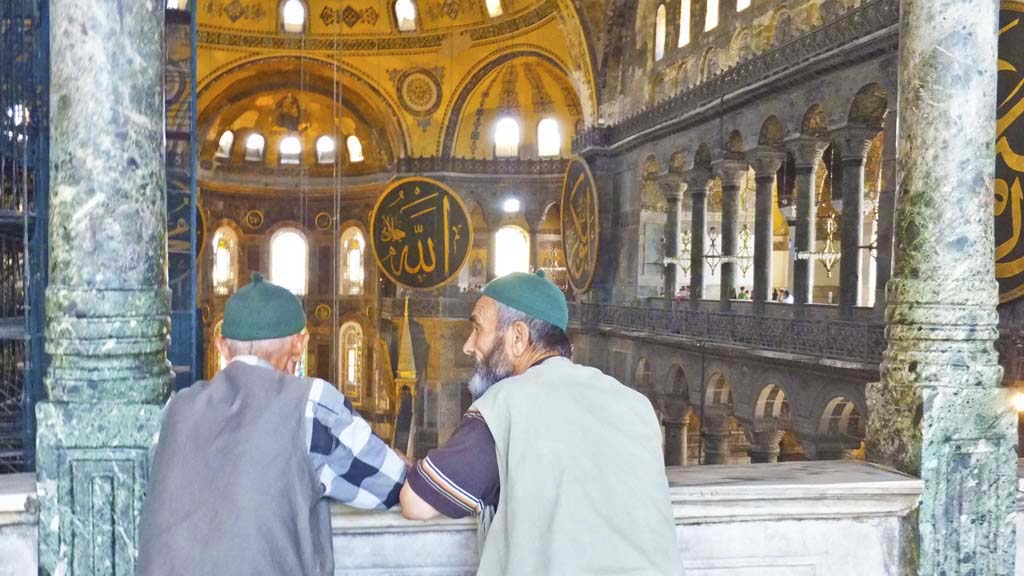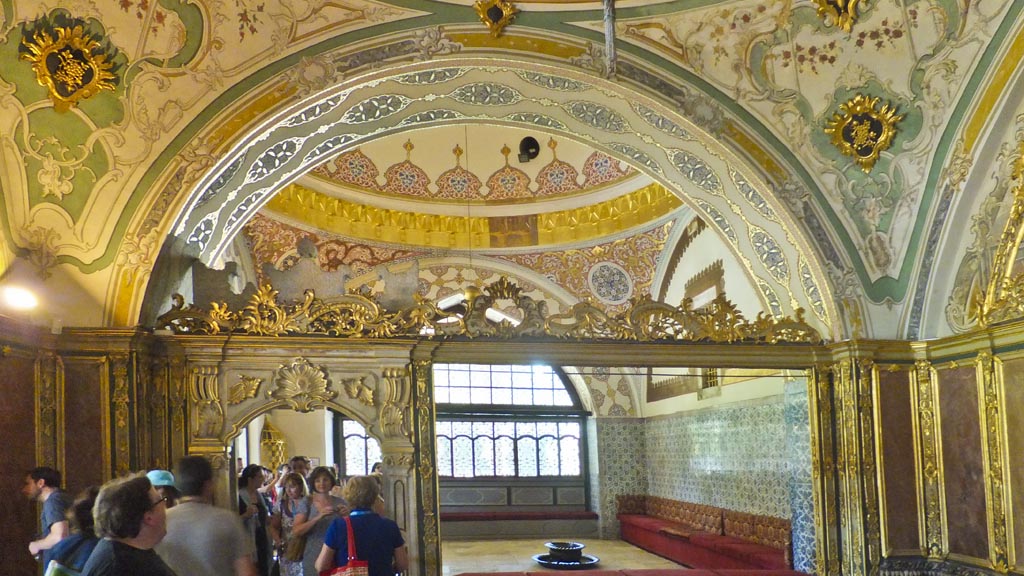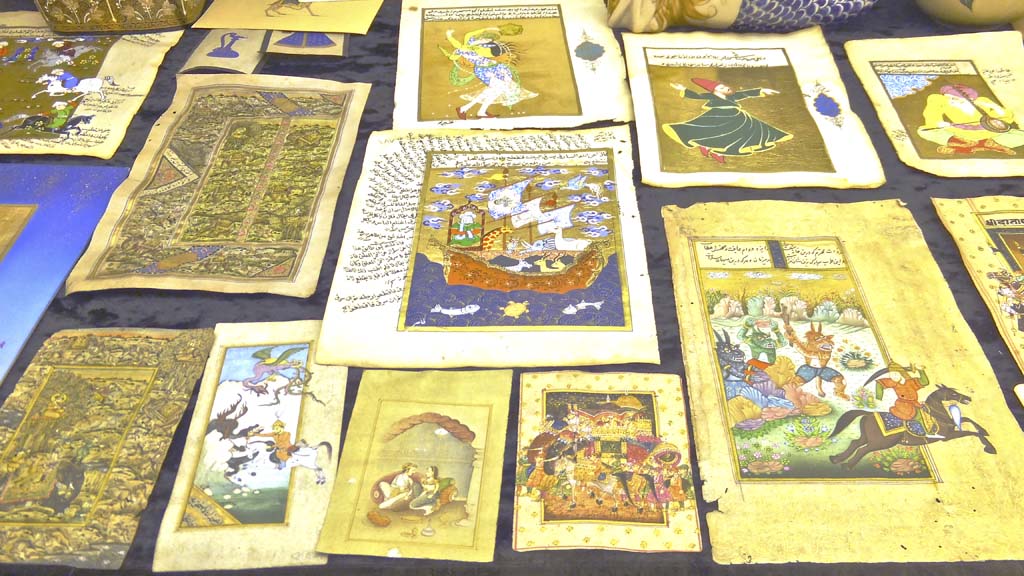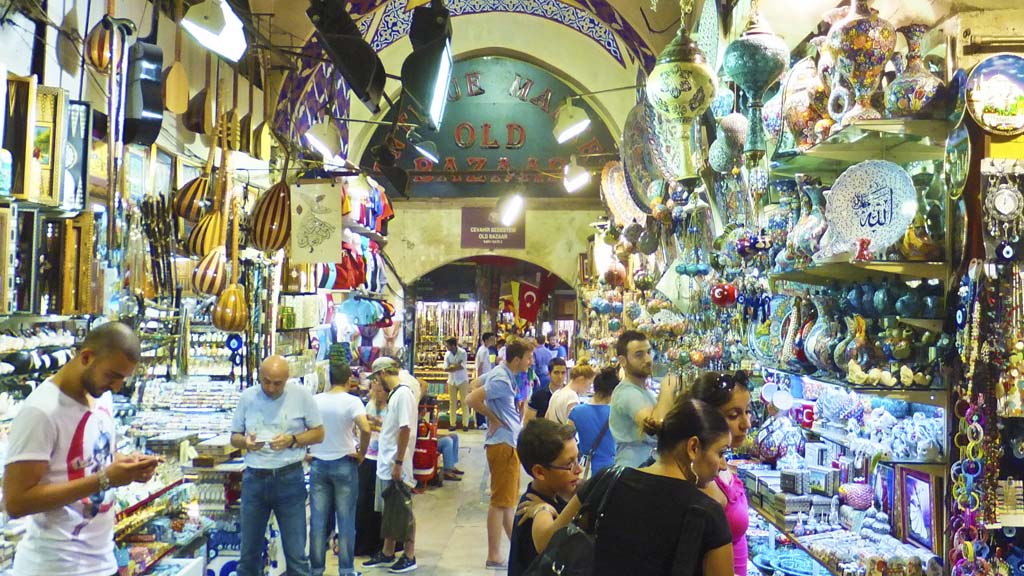
Just scanning Istanbul’s minaret-studded skyline on the busy Bosphorus that divides Europe from Asia evokes images of genies and wizards and magical flying carpets.
It’s Constantinople, the coveted city that inspired Crusades and Tales of Arabian Nights. There’s the legendary Topkapi palace with its jewel-encrusted treasures and its once-forbidden Harem, fabled churches and mosques and of course the Grand Bazaar that was the inspiration for stories of Ali Baba’s cave.
It’s a lot to cover in a single day and fortunately, Celebrity Cruises takes that into account. On my cruise on the Celebrity Beyond, we arrived around noon one day and had the luxury of an overnight stay in Istanbul and didn’t sail away until the afternoon on day two.
Still, it could be a tall order to fit in all the must-do highlights of the ancient city in two half days and still get back to the ship on time.
Fortunately, most of the highlights are in close proximity to the recently opened Galataport, which makes embarkation simple. And the choices of shore excursion from Celebrity Beyond are led by top-notch guide who know how to give guests a good look at the Big 5 attractions by skipping lines and avoiding the crowds. Of course, if you’re a veteran of visits to Istanbul you can get around the gridlocked city by cab. Just be sure you agree on a fare before you accept a ride. More on that below.
The Blue Mosque (Sultanahmet)
The strategy: Start the second day at the Blue Mosque and get in line 15 minutes before it opens. Most tour buses generally don’t start arriving until after the mosque’s public opening at 9 a.m. If you arrive about 15 minutes early and join the queue, you can get to see it before the crowds arrive.
It’s called the Blue Mosque because of the blue tiles that decorate the walls, but the mosque built under the rule of Sultan Ahmet I has an exceptional range of vivid colors in its decorations and domed ceilings. It caused a stir at the time because it was built with six minarets, a lavish display that was as many as the Prophet’s mosque in Mecca, which brought the Sultan harsh criticism for thinking too highly of himself.
One story is that the Sultan had actually specified that his architect build altın minare (minarets in gold) but the architect thought the order was for altı minare (six minarets). The Sultan found a way to regain his street cred by paying to build a seventh minaret at the mosque in Mecca.
(Essential attire: Men should wear long pants or they’ll be issued a robe to wear inside. Women must have a head covering. And shoes must be removed while inside the mosque.)

The Hagia Sofia
The Strategy: Pay the admission price and head straight up to the upper level to avoid the crowds and get the best views of the spectacular mosaics.
The church is one of the world’s largest and even though it was built in record time in 532 A.D. as the center of eastern Christendom, it was built to last and is remarkably intact to this day. Its gorgeous Christian mosaics and decorations are still vibrant today due to the fact they were plastered over when the church became a Mosque under the Ottomans. That protected them–although they’ve proved too tempting. Unfortunately over the years many of the golden tiles around the mosaic of Christ had been pulled away by visitors as souvenirs.
Today the church is a museum and there have been scaffolds cluttering the main floor level for decades. The best and brightest views are from the galleries at the level of the mosaics.

The Topkapi Harem
The Strategy: A separate admission fee is required for the Harem and you’re given an admission time that can mean an hour or more wait if you stand in line. Buy your ticket first and then and go to see the Topkapi treasury until your tour time.
What you can see of the Harem on the tour is actually only a fraction of the building’s 300 rooms, and it helps if you have a good imagination, because the rooms are sparsely furnished and unoccupied. There are rooms of shelves and cupboards where the eunuchs would keep their records and a courtyard and sunny dormitory rooms.
The tour’s highlight is supposedly the Harem baths where the concubines bathed luxuriously but today all you see are the empty pools and acres of ceramic tile. More interesting to me are the Queen Mother’s apartments decorated in decorative Iznik porcelain tiles and the Imperial Hall, where the concubines entertained the Sultan, who sat on a gilded throne.
Topkapi Palace Treasury
The Strategy: Start by entering through the door to Salon 2 rather than waiting in the line that snakes into the courtyard to get into the first room–which is basically a display of armor. The collection gets better the further you go through the rooms of the Treasury.
The main jewels are actually in the furthest corner of the complex. The most famous piece is the Topkapi dagger, encrusted in emeralds, gold and diamonds but there are many more dazzlers including the 86-carat Spoonmakers Diamond. And take a moment after your tour to step out onto the terrace to get the million-dollar view of the Bosphorus that the Sultans enjoyed.

The Grand Bazaar
The Strategy: In the afternoon, the halls are a little less crowded with shoppers.
Because traffic in central Istanbul always moves at a crawl, your tour bus may take half an hour to cover the few blocks from the Topkapi to the Grand Bazaar. But it’s no faster if you take a cab. If you have the energy, walking can get you there quicker.
Once inside the arched gates, don’t wander aimlessly. It helps to have a strategy because there are districts where the top stored for different types of merchandise tend to be clustered.
Things that are always great deals are leather coats and jackets, belts and purses, ceramics and decorative tiles. Clothing and shoes are hit or miss items, many of them are knock offs of designer goods that tend to be made of low-quality materials. Another drawback of shopping for clothes here is that large sizes are often not on stock because many of the shops cater to smaller-framed local customers and not tourists.
Any visit to the bazaar has to include a scan of the windows of the gold shops in the prime main aisle at the top of the bazaar. You can avoid crowding and undue attention from shopkeepers trying to lure you inside their stores if you walk past the first few stores near the entrances before starting your browsing.

One thing I’ve found that is changing for the better is that the younger generation of touts is less aggressive than their predecessors. Now, the merchants seem less likely to try to herd you into their shops and more likely to let you look in peace and take no for an answer.
I have two explanations. One is that the young generation that’s taking over the family businesses have learned that the hard sell can actually turn off potential buyers. The other factor is that many of them now carry smart phones rather than worry beads to pass the time. Like people around the world who discover the on-line world, they’re now experiencing attention deficit. They’re still masters of the come on, though, with lines like “It is your destiny to buy from me.” Or “I have just want you want beautiful lady.”
If you encounter a vendor who seems too pushy though, a polite “No, thanks!” rather than any other comment seems to be the best strategy. Entering into a conversation with a merchant in the bazaar is considered an opening of negotiations. I’ve found you can browse without getting a hard sell by just being polite and admiring their wares, but being firm about the fact you’re not ready to buy today.
And use your bargaining skills with cab drivers as well. The current price of a ride from Galataport to the Grand Bazaar is 15 Euros, although as traffic is perpetually at a standstill, the driver will try to get you agree to get off at the Spice Market instead. Stand your ground because it’s a long uphill climb to the Bazaar’s gates.
And on the return, the cab queue outside the Bazaar is run by touts who will start haggling at 50 Euros to get back to Galataport. They’ll laugh at the offer of 15 Euros and come back with a bid of 40. (They really want Euros rather than Turkish Lira which lose exchange value almost daily)
It was clear there was a long line of cabs waiting in the heat and no other riders in sight, so we kept insisting on 15 Euros and started walking around the corner where taxis turn to avoid waiting their turn in the queuc. As we walked away, a driver came running after us and said “How about 25 Euros?”
We could have held out–but in 90 degree heat loaded down with shopping bags, we agreed. Sometimes convenience beats economy.






1 Trackback / Pingback
Comments are closed.